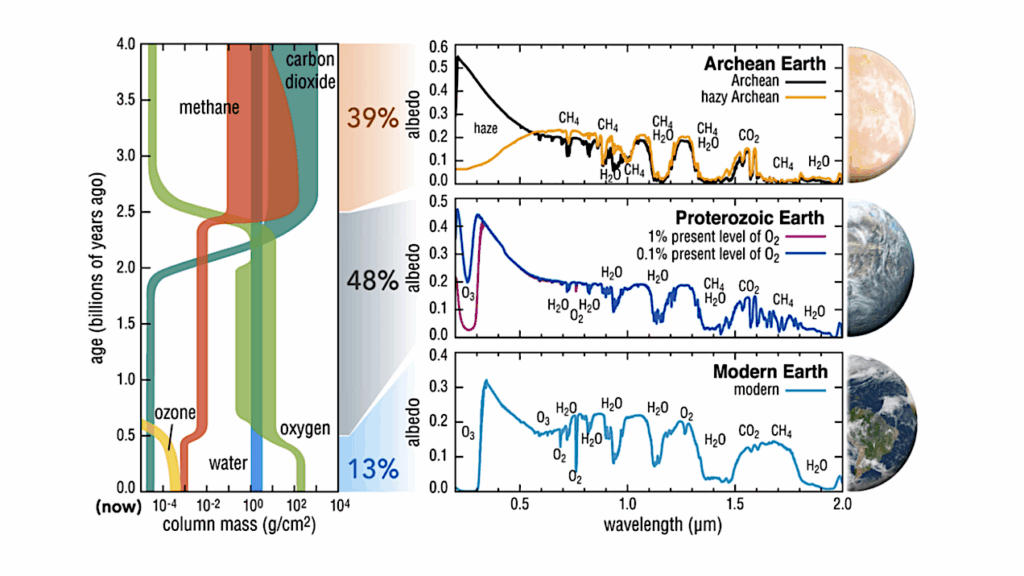Atmospheric Reconnaissance of the Habitable-zone Earth-sized Planets Orbiting TRAPPIST-1

Seven temperate Earth-sized exoplanets readily amenable for atmospheric studies transit the nearby ultracool dwarf star TRAPPIST-1. Their atmospheric regime is unknown and could range from extended primordial hydrogen-dominated to depleted atmospheres.
Hydrogen in particular is a powerful greenhouse gas that may prevent the habitability of inner planets while enabling the habitability of outer ones (refs 6-8). An atmosphere largely dominated by hydrogen, if cloud-free, should yield prominent spectroscopic signatures in the near-infrared detectable during transits. Observations of the innermost planets have ruled out such signatures (ref 9). However, the outermost planets are more likely to have sustained such a Neptune-like atmosphere (refs 10,11). Here, we report observations for the four planets within or near the system’s habitable zone, the circumstellar region where liquid water could exist on a planetary surface (refs 12-14). These planets do not exhibit prominent spectroscopic signatures at near-infrared wavelengths either, which rules out cloud-free hydrogen-dominated atmospheres for TRAPPIST-1 d, e and f, with significance of 8, 6 and 4 sigma, respectively. Such an atmosphere is instead not excluded for planet g. As high-altitude clouds and hazes are not expected in hydrogen-dominated atmospheres around planets with such insolation (refs 15,16), these observations further support their terrestrial and potentially habitable nature.
J. de Wit, H. R. Wakeford, N. Lewis, L. Delrez, M. Gillon, F. Selsis, J. Leconte, B.-O. Demory, E. Belmont, V. Bourrier, A. J. Burgasser, S. Grimm, E. Jehin, S. M. Lederer, J. Owen, V. Stamenkovic, A. H. M. J. Triaud
(Submitted on 6 Feb 2018)
Comments: de Wit, Wakeford, Lewis et al. (2018) published in Nature Astronomy on Feb. 05 2018
Subjects: Earth and Planetary Astrophysics (astro-ph.EP)
DOI: 10.1038/s41550-017-0374-z
Cite as: arXiv:1802.02250 [astro-ph.EP] (or arXiv:1802.02250v1 [astro-ph.EP] for this version)
Submission history
From: Julien de Wit
[v1] Tue, 6 Feb 2018 22:42:01 GMT (17424kb,D)
https://arxiv.org/abs/1802.02250
Astrobiology








